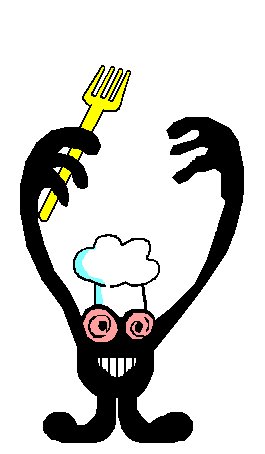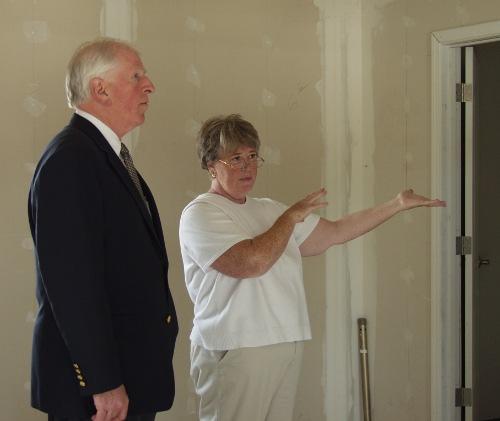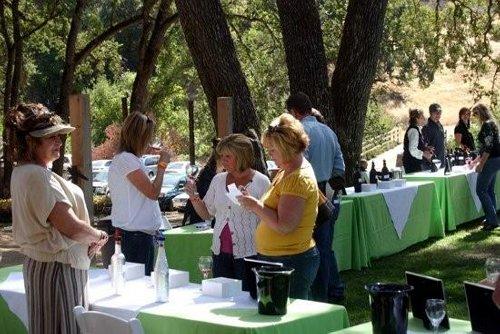- Lake County News Reports
- Posted On
Foodie Freak: Barbera

There are two things my wife would never leave me alone in a room with: a bottle of Barbera and Linda Fiorentino – because she knows I'm crazy about both of them.
Barbera is the second most planted grape in Italy; only Sangiovese is more heavily planted. Although it is a fantastic wine with unique characteristics unlike most red wines, it has just never made it as number one.
Similarly, Linda Fiorentino has been fantastic in many movies but has never reached the associated “star power.” Nebbiolo and Dolcetto grapes aren’t as widely planted as Barbera but tend to be more popular. Italy has wine appellations named for the grape and even different styles of Barbera wine making. There is Barbera D’Asti (dry and full bodied, 85 percent Barbera grapes) and Barbera D’Alba (medium bodied and acidic, 100 percent Barbera grapes), just to name a couple. Both are different appellations in the Piedmont region of Italy and both wines must have a minimum alcohol content of 12 percent just to be called a Barbera.
Barbera grapes have been grown in Italy since at least the 13th century. In the late 20th century the Piedmont region (Barbera’s home region) was rocked by a scandal when it was found that Barbera wines of the area were being spiked with methanol to raise the alcohol content. The deplorable deed left many people blinded and there were several deaths. This caused the popularity of the grape to decline and thousands of acres of vines were ripped from the ground, but in recent years it is finding its popularity again. In her time Linda Fiorentino has had her scandals that also have fallen to the wayside. And if it wasn’t obvious, Linda Fiorentino is Italian also.
Barbera grapevines thrive in hot weather and can develop a very high sugar content which leads to a wine with a high alcohol content. I think one of the reasons that I like Barbera so much is that it is (to me) very reminiscent of port. The fruity taste with the high alcohol burn makes Barbera seem like a mild port. Barbera grapes are fairly disease- and pest-resistant and the grapes are small but intense … I’ll steer clear of any Linda Fiorentino comparisons or jokes at this time.
Barbera is a unique flavored wine that to some people is very welcome but others find offensive. For many years it was used mainly as a blending wine to balance the acid levels or used in the “jug wine” milieu. It isn’t as complex in flavor as the heavier reds, and can be too acidic for the average person. Linda Fiorentino’s character in “The Last Seduction” wasn’t exactly a likeable person either, and though I wouldn’t call her acidic, she sure was toxic. Barbera’s acidity can turn some people off, but I find it very interesting and refreshing. Tannins are typically low to medium and are offset by the acidity.
Most experts think that Barbera should be consumed within six years of harvest for it to be its best. Many movie critics think that, although Linda Fiorentino has made numerous movies and been stellar in all of them, “The Last Seduction” was her best work even though it was her first (when she was younger, just like the wine).
Some Barbera do age very well, so you can buy them and throw them in the cellar for a few years and they tend to get better. Just like, guess who? Come on! Have you seen Linda Fiorentino lately? She’s several years older than me, yet I would still knock Britney Spears to the ground to get near Linda Fiorentino. Cellaring the bottles will soften any tannins that might be harsh, however cellaring should be reserved for the heavier stronger Barbera, not the lighter fruitier ones. Cellaring ones that are lighter and fruitier can cause them to become bitter and brown colored with age. So be sure to know the wine before you choose to put it up.
The flavors in Barbera fairly simple and straightforward, filled with red and black berries, blueberries, raspberries, rhubarb, cherries, dried fruit, fruit jam, minerals, orange peel, plum, spice, tamarind, violets, and watermelon. Aging the wine in oak (often toasted oak, i.e., scorched on the inside) gives it flavors of brandy, brown sugar, caramel, cinnamon, coconut, dark chocolate, dead leaves, earth, mocha, mushrooms, smoke, toast, tobacco, toffee, and vanilla.
Barbera screams to be eaten with steaks, a big hunk of red meat right off the grill, or something with lots of tomato sauce. It would not be at all suitable to drink it with a salad. The acidity of the wine would not pair well with any salad dressing. It would be like putting a hot pink disco suit on Linda Fiorentino - someone might like it, but most people would agree it’s in bad taste.
Linda Fiorentino is a hottie for connoisseurs. You won’t find her in a swimsuit poster on a teenage boy’s wall like Farrah. She does the slow low burn, seducing your mind more than your body. Similarly, Barbera is a wine for someone who really wants something different and completely opposite from the everyday. Barbera is the anti-blonde wine; it won’t sit there and giggle in your glass. It has a warm and husky voice like Linda Fiorentino that just lounges in the glass and purrs ... What? Is that too colorful of a description? Try a Barbera and you’ll understand.
Even the color of Barbera isn’t like other reds. While Cabernet Sauvignons and Merlots are typically blackish red and densely colored, Barbera is a dark ruby. The color causes you to stop and take a second look as if you are looking at a liquid gem.
Barbera is sometimes made in a rustic manner and is left unfiltered so sediment can be present in the bottle. This is considered perfectly normal and proper, so don’t think there’s anything wrong with the wine if you wind up with solid bits left in the bottom of your glass. My general rule for Barbera is to not drink the last half cup in the bottle unless I have checked it for the little chunkies or decanted the bottle.
A strange thing I came across while researching this article is that, while you can Google Linda Fiorentino’s name and it will suggest a related search “Linda Fiorentino’s Legs,” oddly enough if you Google my name the consequent search results don’t mention my legs at all – but there is a medical doctor out there that probably shakes his head when he thinks of the karma of sharing a name with me. Barbera, however, can definitely have its legs talked about. When you swirl the wine around in the glass and the wine makes long streaks down the side of the glass, those are called the legs. While the legs of a wine are an indication of the alcohol content they don’t actually indicate anything terribly significant, but just like Linda Fiorentino’s they’re still frequently looked at.
I hope this gives you a desire to try a bottle of Barbera, and maybe rent “Men In Black” to go with it.
Lake County Barberas:
Robledo Family Winery
Rosa d’Oro Winery
Shannon Ridge Vineyards and Winery
Shooting Star
Zina Hyde Cunningham (Boonville winery, made with Lake County Grapes)
Ross A. Christensen is an award-winning gardener and gourmet cook. He is the author of "Sushi A to Z, The Ultimate Guide" and is currently working on a new book. He has been a public speaker for many years and enjoys being involved in the community. Follow him on Twitter, http://twitter.com/Foodiefreak .











